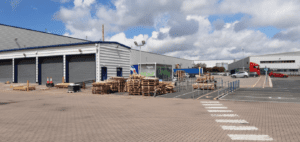Guest blog by Fran Selvaggio
Building automation is critical to the performance, cost, and regulatory compliance of life sciences facilities. Yet, unless Building Management System (BMS) planning occurs in the earliest design stages, delays and additional costs may arise during implementation.
Many design and construction teams follow the Building Accelerator Methodology (BAM), a field-proven approach based on industry best practices. This approach can shorten construction time, improve building performance and efficiency, protect against compliance issues, and contribute to cost savings.
Early design involvement
Modern best practice is to include BMS design at the very beginning of the project. When BMS experts join the design and planning team, building automation can play a greater role in creating a cost-effective building that’s energy-efficient. But even if BAM isn’t introduced until the construction phase, elements of the approach can still accelerate the construction process and eventual owner acceptance.
Post-design techniques
When the design is complete and the project moves to the construction phase, the focus of BAM shifts to BMS implementation issues. Who will be responsible for defining specific details concerning HVAC, power, security, and IT that are not detailed in the project specifications but will greatly impact the end user experience? Will there be continuity across the different systems? The answers to these questions are critical to project success.
Industry best practices
The following best practices align with the typical workflow of BMS design, installation, and implementation for a life sciences facility project:
- Assign a lead hardware engineer to oversee BMS activities throughout the project.
- Establish approved performance or dimensional data (such as flow rates or duct size) before engineering the inline devices.
- Assure that BMS software engineers work in close collaboration and secure approval for operational sequences before coding begins.
- Authorize a full-time BMS project manager to act as the primary customer contact. The project manager ensures collaboration between teams, monitors change orders, evaluates staffing and resources, and oversees ongoing audits for safety and quality.
- Ensure that the BMS installation subcontractor documents locations and tags all devices as the installation proceeds in order to better prepare for commissioning and eventual operation.
- Work in collaboration with the BMS installation subcontractor to conduct a full evaluation of the BMS system to check for problems such as incorrect wiring or software configuration.
What’s the ultimate payoff for taking the BAM approach to designing and constructing a life sciences facility? Faster construction, quicker owner acceptance, and improved performance and efficiency. Leveraging the BAM approach enables life science project stakeholders to get it right the first time.

